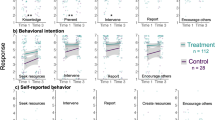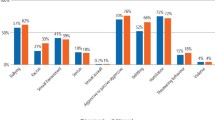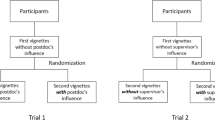Abstract
Over the past ten years, there have been several high-profile accidents in academic laboratories around the world, resulting in significant injuries and fatalities. The aftermath of these incidents is often characterized by calls for reflection and re-examination of the academic discipline’s approach to safety research and policy. However, the study of academic lab safety is still underdeveloped and necessary data about changes in safety attitudes and behaviours has not been gathered. This Review article critically examines the state of academic chemical safety research from a multifactorial stance, including research on the occurrence of lab accidents, contributors to lab accidents, the state of safety training research and the cultural barriers to conducting safety research and implementing safer lab practices. The Review concludes by delineating research questions that must be addressed to minimize future serious academic laboratory incidents as well as stressing the need for committed leadership from our research institutions.
This is a preview of subscription content, access via your institution
Access options
Access Nature and 54 other Nature Portfolio journals
Get Nature+, our best-value online-access subscription
$29.99 / 30 days
cancel any time
Subscribe to this journal
Receive 12 print issues and online access
$259.00 per year
only $21.58 per issue
Buy this article
- Purchase on Springer Link
- Instant access to full article PDF
Prices may be subject to local taxes which are calculated during checkout
Similar content being viewed by others
References
Baudendistel, B. Investigation Report University of California, Los Angeles, Case No. S1110-003-09 (Department of Industrial Relations, Division of Occupational Safety and Health, Los Angeles, 2009).
Technical Bulletin AL-134: Handling air-sensitive reagents (Sigma Aldrich, 2012).
Benderley, B. L. California investigation report explains what went wrong for Sangji. Science http://blogs.sciencemag.org/sciencecareers/2012/01/yesterday-we-pu.html (2012).
Allen, K. A young lab worker, a professor and a deadly accident. Toronto Star (2014); https://www.thestar.com/news/world/2014/03/30/a_young_lab_worker_a_professor_and_a_deadly_accident.html
Benderly, B. L. Danger in school labs. Sci. Am. 303, 18–20 (2010).
Grabowski, L. E. & Goode, S. R. Review and analysis of safety policies of chemical journals. J. Chem. Health Saf. 23, 30–35 (2016).
Langerman, N. Warning to all principal investigators. J. Chem. Health Saf. 19, 42–43 (2012).
Kemsley, J. N. University of Hawaii fined $115,500 for lab explosion. Chem. Eng. News (2016); http://cen.acs.org/articles/94/web/2016/09/University-Hawaii-fined-115500-lab.html
Pinghui, Z. Three students die in blast at Beijing university laboratory. South China Morning Post (2018); http://www.scmp.com/news/china/society/article/2179543/three-students-die-blast-beijing-university-laboratory
Van Noorden, R. A death in the lab. Nature 472, 270–271 (2011).
Texas Tech University laboratory explosion (U.S. Chemical Safety and Hazard Investigation Board, 2010).
Kemsley, J. N. 10 years after Sheri Sangji’s death, are academic labs any safer? Chem. Eng. News (2018).
Hunter, K. et al. Guidelines for chemical laboratory safety in academic institutions (American Chemical Society, 2016); https://www.acs.org/content/dam/acsorg/about/governance/committees/chemicalsafety/publications/acs-safety-guidelines-academic.pdf
Kaufman, J. A. Killed in lab accidents: Memorial Wall. Lab Safety https://www.labsafety.org/memorial-wall (2019).
Miller, A. J. M. & Tonks, I. A. Let’s talk about safety: Open communication for safer laboratories. Organometallics 37, 3225–3227 (2018).
Young, J. A. How “safe” are the students in my lab? Do teachers really care. J. Chem. Educ. 60, 1067–1068 (1983).
Accidents in waiting. Nature 472, 259 (2011).
Jorgensen, E. F. Development and psychometric evaluation of the Research Laboratory Safe Behavior Survey (RLSBS). J. Chem. Health Saf. 24, 38–43 (2017).
Peplow, M. & Marris, E. How dangerous is chemistry? Nature 441, 560–561 (2006).
Hellman, M. A., Savage, E. P. & Keefe, T. J. Epidemiology of accidents in academic chemistry laboratories. Part 1. Accident data survey. J. Chem. Educ. 63, A267 (1986).
Van Noorden, R. Safety survey reveals lab risks. Nature 493, 9–10 (2013).
Ayi, H.-R. & Hon, C.-Y. Safety culture and safety compliance in academic laboratories: A Canadian perspective. J. Chem. Health Saf. 25, 6–12 (2018).
Simmons, H. E., Matos, B. & Simpson, S. A. Analysis of injury data to improve safety and training. J. Chem. Health Saf. 24, 21–28 (2017).
Sieloff, A. C., Shendell, D. G., Marshall, E. G. & Ohman-Strickland, P. An examination of injuries and respiratory irritation symptoms among a sample of undergraduate chemistry students from a Public Northeastern University. J. Chem. Health Saf. 20, 17–26 (2013).
Probst, T. M., Barbaranelli, C. & Petitta, L. The relationship between job insecurity and accident under-reporting: A test in two countries. Work Stress 27, 383–402 (2013).
Rathman, T. L. & Schwindeman, J. A. Preparation, properties, and safe handling of commercial organolithiums: Alkyllithiums, lithium sec-organoamides, and lithium alkoxides. Org. Process Res. Dev. 18, 1192–1210 (2014).
Mikula, H. et al. Practical and efficient large-scale preparation of dimethyldioxirane. Org. Process Res. Dev. 17, 313–316 (2013).
Morandi, B. & Carreira, E. M. Iron-catalyzed cyclopropanation in 6 M KOH with in situ generation of diazomethane. Science 335, 1471–1474 (2012).
Busura, S., Khan, F., Hawboldt, K. & Iliyas, A. Quantitative risk-based ranking of chemicals considering hazardous thermal reactions. J. Chem. Health Saf. 21, 27–38 (2014).
Frontier, A. Laboratory techniques and methods to improve your experimental skills. Not Voodoo http://chem.chem.rochester.edu/~nvd/index.php (2019).
Lowe, D. How not to do it: Tertiary butyllithium. Science Mag https://blogs.sciencemag.org/pipeline/archives/2007/03/01/how_not_to_do_it_tertiary_butyllithium (2007).
Snyder, S. A. Essential Reagents for Organic Synthesis (eds Fuchs, P., Bode, J., Charette, A. & Rovis, T) (Wiley, 2019).
Urben, P. G. Bretherick’s Handbook of Reactive Chemical Hazards 7th edn (Elsevier, 2017).
Bertozzi, C. R. Ingredients for a positive safety culture. ACS Cent. Sci. 2, 764–766 (2016).
Huising, R. & Silbey, S. S. Constructing consequences for noncompliance: The case of academic laboratories. Ann. Am. Acad. Pol. Soc. Sci. 649, 157–177 (2013).
Hendershot, D. C. Process safety: Is safety “common sense”? J. Chem. Health Saf. 19, 35–36 (2012).
Kemsley, J. N. Learning from UCLA. Chem. Eng. News 87, 29–34 (2009).
Schmidt, H. Anatomy of an incident—Multiple failure of safety systems under stress. J. Chem. Health Saf. 25, 6–11 (2018).
Cournoyer, M. E., Trujillo, S., Lawton, C. M., Land, W. M. & Schreiber, S. B. Anatomy of an incident. J. Chem. Health Saf. 23, 40–48 (2016).
Phifer, R. Case study – Incident investigation: Laboratory explosion. J. Chem. Health Saf. 21, 2–5 (2014).
Reason, J. The contribution of latent human failures to the breakdown of complex systems. Philos. Trans. R. Soc., B 327, 475–484 (1990).
Young, J. A. How complacency can jeopardize safety. Chem. Health Saf. 6, 5 (1999).
Wu, T.-C., Liu, C.-W. & Lu, M.-C. Safety climate in university and college laboratories: Impact of organizational and individual factors. J. Saf. Res. 38, 91–102 (2007).
Steward, J. E., Wilson, V. L. & Wang, W.-H. Evaluation of safety climate at a major public university. J. Chem. Health Saf. 23, 4–12 (2016).
Schröder, I., Huang, D. Y. Q., Ellis, O., Gibson, J. H. & Wayne, N. L. Laboratory safety attitudes and practices: A comparison of academic, government, and industry researchers. J. Chem. Health Saf. 23, 12–23 (2016).
McEwen, L., Stuart, R., Sweet, E. & Izzo, R. Baseline survey of academic chemical safety information practices. J. Chem. Health Saf. 25, 6–10 (2018).
King, M. F. & Bruner, G. C. Social desirability bias: A neglected aspect of validity testing. Psychol. Market. 17, 79–103 (2000).
Edwards, A. L. The social desirability variable in personality assessment and research. (Dryden Press, 1957).
Wardlaw, M. J. Three lessons for a better cycling future. BMJ 321, 1582–1585 (2000).
Finkelstein, E. A., Strombotne, K. L., Chan, N. L. & Krieger, J. Mandatory menu labeling in one fast-food chain in King County, Washington. Am. J. Prev. Med. 40, 122–127 (2011).
Ménard, A. D., Houser, C., Brander, R. W., Trimble, S. & Scaman, A. The psychology of beach users: Importance of confirmation bias, action, and intention to improving rip current safety. Nat. Hazards 94, 953–973 (2018).
Bretherick, L. Chemical laboratory safety: The academic anomaly. J. Chem. Educ. 67, A12 (1990).
Hill, R. H. Make safety a habit! J. Chem. Health Saf. 25, 12–17 (2018).
Darley, J. M. & Latane, B. Bystander intervention in emergencies: Diffusion of responsibility. J. Person. Soc. Psychol. 8, 377–383 (1968).
Leggett, D. J. Identifying hazards in the chemical research laboratory. Process Saf. Prog. 31, 393–397 (2012).
Stuart, R. Emergency response training for laboratory workers. J. Chem. Health Saf. 17, 29–32 (2010).
Mogielnicki, R. P., Stevenson, K. A. & Willemain, T. R. Patient and bystander response to medical emergencies. Med Care 13, 753–762 (1975).
Shotland, R. L. & Heinold, W. D. Bystander response to arterial bleeding: Helping skills, the decision-making process, and differentiating the helping response. J. Person. Soc. Psychol. 49, 347–356 (1985).
Hill, R. H. & Finster, D. C. Academic leaders create strong safety cultures in colleges and universities. J. Chem. Health Saf. 20, 27–34 (2013).
West, S. S., Westerlund, J. F., Stephenson, A. L., Nelson, N. C. & Nyland, C. K. Safety in science classrooms: What research and best practice say. Educ. For. 67, 174–183 (2003).
Withers, J. H., Freeman, S. A. & Kim, E. Learning and retention of chemical safety training information: A comparison of classroom versus computer-based formats on a college campus. J. Chem. Health Saf. 19, 47–55 (2012).
Nelson, D. A. Incorporating chemical health and safety topics into chemistry curricula: Past accomplishments and future needs. Chem. Health Saf. 6, 43–48 (1999).
Fivizzani, K. P. Where are we with lab safety education: Who, what, when, where, and how? J. Chem. Health Saf. 23, 18–20 (2016).
Wood-Black, F. Incorporating safety into the general chemistry curriculum. J. Chem. Health Saf. 21, 14–21 (2014).
Crockett, J. M. Laboratory safety for undergraduates. J. Chem. Health Saf. 18, 16–25 (2011).
Bradley, S. Integrating safety into the undergraduate chemistry curriculum. J. Chem. Health Saf. 18, 4–10 (2011).
Burchett, S., Pfaff, A., Hayes, J. & Woelk, K. Exploding misconceptions: Developing a culture of safety through learner driven activities. J. Chem. Health Saf. 24, 36–42 (2017).
Matson, M. L., Fitzgerald, J. P. & Lin, S. Creating customized, relevant, and engaging laboratory safety videos. J. Chem. Educ. 84, 1727–1728 (2007).
Karapantsios, T. D., Boutskou, E. I., Touliopoulou, E. & Mavros, P. Evaluation of chemical laboratory safety based on student comprehension of chemicals labelling. Ed. Chem. Eng. 3, e66–e73 (2008).
Reniers, G. L. L., Ponnet, K. & Kempeneers, A. Higher education chemical lab safety interventions: Efficacious or ineffective? J. Chem. Health Saf. 21, 4–8 (2014).
Gallion, L. A., Samide, M. J. & Wilson, A. M. Demonstrating the importance of cleanliness and safety in an undergraduate teaching laboratory. J. Chem. Health Saf. 22, 28–31 (2015).
Alaimo, P. J., Langenhan, J. M., Tanner, M. J. & Ferrenberg, S. M. Safety teams: An approach to engage students in laboratory safety. J. Chem. Educ. 87, 856–861 (2010).
Kennedy, S. & Palmer, J. Teaching safety: 1000 students at a time. J. Chem. Health Saf. 18, 26–31 (2011).
Makransky, G., Thisgaard, M. W. & Gadegaard, H. Virtual simulations as preparation for lab exercises: Assessing learning of key laboratory skills in microbiology and improvement of essential non-cognitive skills. PLoS ONE 11, e0155895 (2016).
Staehle, I. O. et al. An approach to enhance the safety culture of an academic chemistry research laboratory by addressing behavioral factors. J. Chem. Educ. 93, 217–222 (2016).
McGarry, K. A. et al. Student involvement in improving the culture of safety in academic laboratories. J. Chem. Educ. 90, 1414–1417 (2013).
Ritch, D. & Rank, J. Laboratory safety in the biology lab. Bioscene 27, 17–22 (2001).
Kapin, J. M. Beyond chemical safety— an integrated approach to laboratory safety management. Chem. Health Saf. 6, 20–22 (1999).
Shariff, A. M. & Norazahar, N. At-risk behaviour analysis and improvement study in chemical engineering laboratories. Int. J. Chem. Environ. Eng. 2, 51–55 (2011).
Wyllie, R., Lee, K., Morris-Benavides, S. & Matos, B. What to expect when you’re inspecting: A summary of academic laboratory inspection programs. J. Chem. Health Saf. 23, 18–24 (2016).
Ferjencik, M. & Jalovy, Z. What can be learned from incidents in chemistry labs. J. Loss Prev. Process Ind. 23, 630–636 (2010).
Young, J. A. The professional practice of chemical safety. Chem. Health Saf. 6, 41–42 (1999).
Marendaz, J.-L., Friedrich, K. & Meyer, T. Safety management and risk assessment in chemical laboratories. CHIMIA 65, 734–737 (2011).
Camino, F. E. Make safety awareness a priority: Use a login software in your research facility. J. Chem. Health Saf. 24, 22–25 (2017).
Nitsche, C. I., Whittick, G. & Manfredi, M. Collecting reaction incident information: Engaging the community in sharing safety learnings. J. Chem. Health Saf. 25, 2–5 (2018).
LaPierre, J. It’s 1:30 a.m.-Do you know who’s in your laboratories? Chem. Health Saf. 6, 31–33 (1999).
Mulcahy, M. B. et al. College and university sector response to the U.S. Chemical Safety Board Texas Tech incident report and UCLA laboratory fatality. J. Chem. Health Saf. 20, 6–13 (2013).
National Research Council. Prudent practices in the laboratory: Handling and disposal of chemicals (The National Academies Press, 1995).
Bayer, R. Lab safety as a collateral duty in small colleges. J. Chem. Educ. 61, A259 (1984).
Kaufman, J. A. Safety in the academic laboratory. J. Chem. Educ. 55, A337 (1978).
Scherz, P. Risk, prudence and moral formation in the laboratory. J. Moral Educ. 47, 304–315 (2018).
Ashbrook, P. Laboratory safety in academia. J. Chem. Health Saf. 20, 62 (2013).
Ashbrook, P. C. Hazard assessment. J. Chem. Health Saf. 21, 35 (2014).
Ashbrook, P. C. Accountability. J. Chem. Health Saf. 20, 48 (2013).
Czornyj, E., Newcomer, D., Schroeder, I., Wayne, N. L. & Merlic, C. A. Proceedings of the 2016 Workshop Safety By Design – Improving safety in research laboratories. J. Chem. Health Saf. 25, 36–49 (2018).
Backus, B. D. et al. Laboratory safety culture: Summary of the chemical education research and practice – Safety in chemistry education panel discussion at the 46th Midwest and 39th Great Lakes Joint Regional American Chemical Society Meeting, St. Louis, Missouri, on October 21, 2011. J. Chem. Health Saf. 19, 20–24 (2012).
Langerman, N. Laboratory safety? J. Chem. Health Saf. 16, 49–50 (2009).
Langerman, N. Reactive chemistry incidents in laboratories. J. Chem. Health Saf. 16, 23–26 (2009).
McCroskey, J. C. in Teaching communication: Theory, research, and methods (eds Daly, J.A., Friedrich, G.W. & Vangelisti, A.L.) 471–479 (Erlbaum Associates, 1990).
One injured in lab explosion at UCLA. Los Angeles Daily News https://www.dailynews.com/2019/02/05/one-injured-in-lab-explosion-at-ucla/ (2019).
Acknowledgements
ADM and JFT would like to thank the University of Windsor for salary support for the preparation of this work. We would also like to thank C. Houser, K. Soucie, M. Bondy, J. Hayward and D. Cavallo-Medved for their comments on earlier drafts of this paper.
Author information
Authors and Affiliations
Contributions
A.D.M. wrote the draft of the paper; both A.D.M. and J.F.T. conducted the literature search and analysis; both A.D.M. and J.F.T. revised the paper.
Corresponding authors
Ethics declarations
Competing interests
The authors declare no competing interests.
Additional information
Publisher’s note Springer Nature remains neutral with regard to jurisdictional claims in published maps and institutional affiliations.
Supplementary information
Supplementary information
The investigation report prepared by California’s Division of Occupational Safety & Health relating to the laboratory accident at UCLA in 2008 that led to the death of Sheharbano Sangji.
Rights and permissions
About this article
Cite this article
Ménard, A.D., Trant, J.F. A review and critique of academic lab safety research. Nat. Chem. 12, 17–25 (2020). https://doi.org/10.1038/s41557-019-0375-x
Received:
Accepted:
Published:
Issue Date:
DOI: https://doi.org/10.1038/s41557-019-0375-x
This article is cited by
-
Developing a gamified artificial intelligence educational robot to promote learning effectiveness and behavior in laboratory safety courses for undergraduate students
International Journal of Educational Technology in Higher Education (2023)
-
Insights from a laboratory fire
Nature Chemistry (2023)
-
Large language models for chemistry robotics
Autonomous Robots (2023)
-
Rank Has Its Privileges: Explaining Why Laboratory Safety Is a Persistent Challenge
Journal of Business Ethics (2023)
-
A new approach for explosion accident prevention in chemical research laboratories at universities
Scientific Reports (2022)



